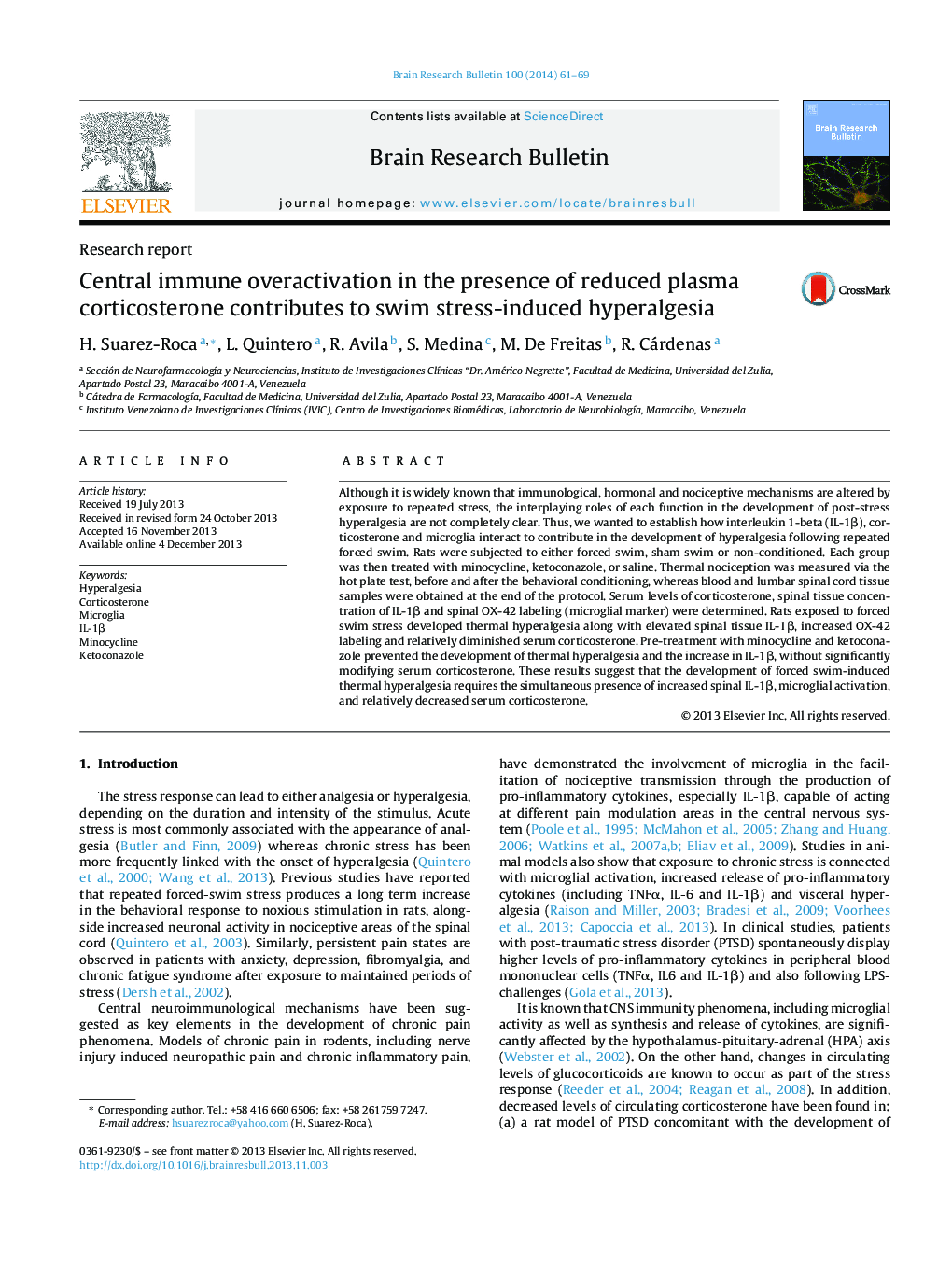| کد مقاله | کد نشریه | سال انتشار | مقاله انگلیسی | نسخه تمام متن |
|---|---|---|---|---|
| 4318852 | 1613255 | 2014 | 9 صفحه PDF | دانلود رایگان |
• Repeated swim stress increases nociception, spinal IL-1β and microglial activity.
• Minocycline and ketoconazole prevented thermal hyperalgesia and increase in IL-1β.
• Serum corticosterone is relatively reduced after swim stress to ketoconazole-resistant levels.
• Stress-induced CNS immunity mediates hyperalgesia only under HPA hypoactivity.
Although it is widely known that immunological, hormonal and nociceptive mechanisms are altered by exposure to repeated stress, the interplaying roles of each function in the development of post-stress hyperalgesia are not completely clear. Thus, we wanted to establish how interleukin 1-beta (IL-1β), corticosterone and microglia interact to contribute in the development of hyperalgesia following repeated forced swim. Rats were subjected to either forced swim, sham swim or non-conditioned. Each group was then treated with minocycline, ketoconazole, or saline. Thermal nociception was measured via the hot plate test, before and after the behavioral conditioning, whereas blood and lumbar spinal cord tissue samples were obtained at the end of the protocol. Serum levels of corticosterone, spinal tissue concentration of IL-1β and spinal OX-42 labeling (microglial marker) were determined. Rats exposed to forced swim stress developed thermal hyperalgesia along with elevated spinal tissue IL-1β, increased OX-42 labeling and relatively diminished serum corticosterone. Pre-treatment with minocycline and ketoconazole prevented the development of thermal hyperalgesia and the increase in IL-1β, without significantly modifying serum corticosterone. These results suggest that the development of forced swim-induced thermal hyperalgesia requires the simultaneous presence of increased spinal IL-1β, microglial activation, and relatively decreased serum corticosterone.
Journal: Brain Research Bulletin - Volume 100, January 2014, Pages 61–69
